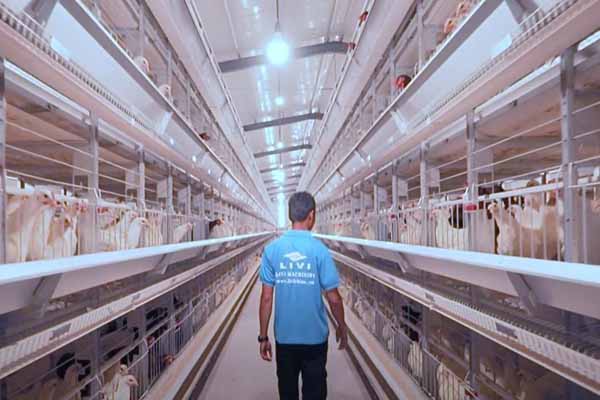Brooding Cages: The Ultimate Guide for Broiler Chicken and Baby Layer Housing
Time : 2025-04-19
Brooding cages have become an essential piece of equipment in modern poultry farming. These specialized cages provide a controlled environment for broiler chickens and baby layers, ensuring their health and growth. In this article, we’ll dive deep into the world of brooding cages, exploring their benefits, types, and best practices for setting up and maintaining them.
What are Brooding Cages?
Brooding cages are designed to house young chickens during their critical early stages of life. These cages offer a safe, warm, and nurturing space for broiler chickens and baby layers, which are particularly sensitive to temperature fluctuations and external threats.
Benefits of Brooding Cages
1. Temperature Control: One of the most significant advantages of brooding cages is their ability to maintain a consistent and comfortable temperature for the chicks. This is crucial during the first few weeks of life when their immune systems are developing.
2. Protection from Predators: Brooding cages keep chicks secure from predators, such as snakes, rats, and other birds, which can be a significant threat to their survival.
3. Space Management: These cages provide an organized and manageable space, making it easier for farmers to handle and monitor their chicks.
4. Egg Quality: Properly managed brooding environments can lead to better egg quality and higher production rates in adult chickens.
Types of Brooding Cages
1. Wire Cages: These are the most common type of brooding cage. Made of galvanized steel, they are durable and can be easily sanitized.
2. Plastic Cages: Plastic cages are often used for baby layers. They provide insulation and can be heated more efficiently than metal cages.
3. Slatted Cages: Slatted cages are ideal for larger broiler flocks. They allow for better airflow and are easier to clean.
Setting Up Brooding Cages
1. Location: Choose a well-insulated room or area with minimal temperature fluctuation. The location should be free from drafts and predators.
2. Cage Placement: Arrange the cages in a way that maximizes space while allowing for easy access to each one. Leave enough space for walking between cages.
3. Temperature Control: Use a reliable heating system to maintain the desired temperature inside the cages. A thermostat can help ensure the chicks are kept at the optimal temperature.
4. Ventilation: Ensure the brooding room has adequate ventilation to prevent overheating and the buildup of harmful gases.
Best Practices for Maintaining Brooding Cages
1. Regular Cleaning: Clean the cages daily to remove waste and prevent the spread of diseases. Sanitize the cages between batches to maintain hygiene.
2. Feeding and Watering: Provide a constant supply of fresh water and feed. Ensure that the feeders and waterers are easy to access and are sanitized regularly.
3. Monitoring: Regularly check on the chicks to ensure they are healthy and adjusting well to their environment. Look for signs of stress or illness.
4. Health Management: Implement a vaccination and health management program to protect the chicks from diseases.
Conclusion
Brooding cages are an invaluable tool for any poultry farmer looking to raise healthy and productive chickens. By understanding the types of brooding cages available, how to set them up, and best practices for maintenance, you can create an optimal environment for your broiler chickens and baby layers. Remember, a well-managed brooding period can set the stage for a successful and profitable poultry farming operation.












